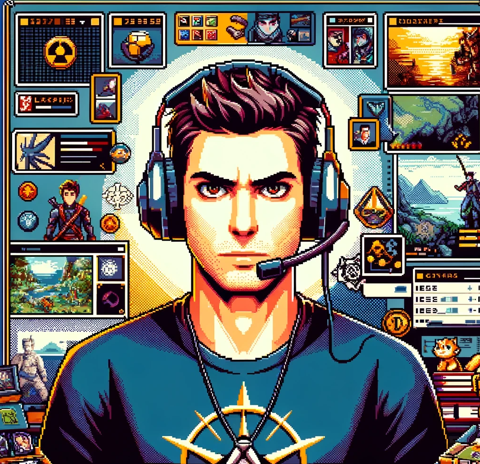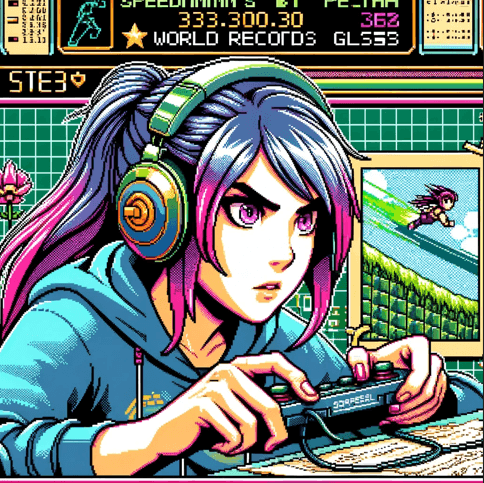 Spelunky 2, developed and published by Mossmouth, hits hard with fresh roguelike chaos. Steam reviews call it PC gaming’s Mario and consistently praise its creative traps. Personally, I love its dynamic liquid physics—lava pours realistically, raising tension every run. Additionally, Mossmouth, led by Derek Yu, expanded the world with multi-layered levels and branching paths, making exploration feel truly endless. As an open-world fan, I especially appreciate the hidden treasure rooms tucked behind the playfield.
Spelunky 2, developed and published by Mossmouth, hits hard with fresh roguelike chaos. Steam reviews call it PC gaming’s Mario and consistently praise its creative traps. Personally, I love its dynamic liquid physics—lava pours realistically, raising tension every run. Additionally, Mossmouth, led by Derek Yu, expanded the world with multi-layered levels and branching paths, making exploration feel truly endless. As an open-world fan, I especially appreciate the hidden treasure rooms tucked behind the playfield.
 I’ve logged over 50 hours finding every secret in Spelunky 2. Not only do Base Camp unlockables enhance replay value, but dozens of NPCs also offer side quests galore. Players continue to love the eggplant mystery—some still debate its true purpose! Furthermore, Mossmouth’s level randomizer ensures that no two runs ever feel the same. Every collectible mount, from turkeys to boars, features unique stats, making 100 percent completion a glorious grind.
I’ve logged over 50 hours finding every secret in Spelunky 2. Not only do Base Camp unlockables enhance replay value, but dozens of NPCs also offer side quests galore. Players continue to love the eggplant mystery—some still debate its true purpose! Furthermore, Mossmouth’s level randomizer ensures that no two runs ever feel the same. Every collectible mount, from turkeys to boars, features unique stats, making 100 percent completion a glorious grind.
 I dissected the combat mechanics down to frame data. For instance, the whip’s grab attack and bomb jumps demand precise timing. In competitive speedruns, obtaining the Kapala means mastering curses and poison mechanics. Moreover, Derek Yu revealed in a GDC talk that he built Spelunky 2’s physics engine from scratch to reward creativity. This innovation pushes platformers into new strategy territory, even rivaling Dead Cells’ fluidity.
I dissected the combat mechanics down to frame data. For instance, the whip’s grab attack and bomb jumps demand precise timing. In competitive speedruns, obtaining the Kapala means mastering curses and poison mechanics. Moreover, Derek Yu revealed in a GDC talk that he built Spelunky 2’s physics engine from scratch to reward creativity. This innovation pushes platformers into new strategy territory, even rivaling Dead Cells’ fluidity.
 I shaved five minutes off my best classic mode time using rope tricks and water physics. Thanks to the realistic liquids, I can block lava flows and boost jumps more efficiently. Community leaderboards, meanwhile, thrive on small glitches that Mossmouth embraced rather than patched out. That risk-reward loop keeps me optimizing routes endlessly. Ultimately, Spelunky 2 rewards creative routing like no other roguelike.
I shaved five minutes off my best classic mode time using rope tricks and water physics. Thanks to the realistic liquids, I can block lava flows and boost jumps more efficiently. Community leaderboards, meanwhile, thrive on small glitches that Mossmouth embraced rather than patched out. That risk-reward loop keeps me optimizing routes endlessly. Ultimately, Spelunky 2 rewards creative routing like no other roguelike.
 The Moon setting feels fresh and eerie. You seek your missing family while uncovering ancient civilizations. According to Mossmouth’s interviews, they intended an emotional core beneath the platforming chaos. In Base Camp, each NPC shares lore snippets that gradually deepen the world.
The Moon setting feels fresh and eerie. You seek your missing family while uncovering ancient civilizations. According to Mossmouth’s interviews, they intended an emotional core beneath the platforming chaos. In Base Camp, each NPC shares lore snippets that gradually deepen the world.
 Mossmouth used a custom pixel engine for richer lighting. Shadows flicker realistically on molten lava. The color palette shifts smoothly from dusty caves to neon moon caverns. Notably, every sprite features subtle animations—spiders twitch, treasure chests glow.
Mossmouth used a custom pixel engine for richer lighting. Shadows flicker realistically on molten lava. The color palette shifts smoothly from dusty caves to neon moon caverns. Notably, every sprite features subtle animations—spiders twitch, treasure chests glow.
 The soundtrack blends tribal drums with ambient synths, perfectly matching each biome’s mood. SFX like the whip crack or water splash cue me into combat windows. Since there are no voiced lines, tension remains high and sound design takes center stage.
The soundtrack blends tribal drums with ambient synths, perfectly matching each biome’s mood. SFX like the whip crack or water splash cue me into combat windows. Since there are no voiced lines, tension remains high and sound design takes center stage.
 Spelunky 2’s difficulty curve flows smoothly until the late-game hell runs. Many players praise early runs as fair but brutal. In response, community mods add accessibility options like slower timer modes. This, in turn, opens doors for new speedrunners.
Spelunky 2’s difficulty curve flows smoothly until the late-game hell runs. Many players praise early runs as fair but brutal. In response, community mods add accessibility options like slower timer modes. This, in turn, opens doors for new speedrunners.
 Each explorer unlocks new base camp dialogue. Through this, you learn about their fears and motivations. Mossmouth designs characters with minimal art but maximum personality.
Each explorer unlocks new base camp dialogue. Through this, you learn about their fears and motivations. Mossmouth designs characters with minimal art but maximum personality.
 With over a dozen routes to the City of Gold and dozens of secrets to uncover, every run feels unique. The recent ghost ship update added even more branching, significantly boosting replayability. Compared to Rogue Legacy, Spelunky 2’s world feels more alive and immersive.
With over a dozen routes to the City of Gold and dozens of secrets to uncover, every run feels unique. The recent ghost ship update added even more branching, significantly boosting replayability. Compared to Rogue Legacy, Spelunky 2’s world feels more alive and immersive.
 Spelunky 2 stands out as a masterclass in roguelike design. It innovates platforming with fluid physics, diverse NPC interactions, and deep combat systems. Overall, its blend of challenge and creativity sets a new bar for indie games.
Spelunky 2 stands out as a masterclass in roguelike design. It innovates platforming with fluid physics, diverse NPC interactions, and deep combat systems. Overall, its blend of challenge and creativity sets a new bar for indie games.
 Try Hollow Knight for tight platform combat. Dead Cells nails replay value and fluidity. Rogue Legacy 2 offers evolving castles and traits. Celeste tests precision platforming with a heartfelt story. Meanwhile, Risk of Rain 2 brings 3D roguelike action with scaling chaos.
Try Hollow Knight for tight platform combat. Dead Cells nails replay value and fluidity. Rogue Legacy 2 offers evolving castles and traits. Celeste tests precision platforming with a heartfelt story. Meanwhile, Risk of Rain 2 brings 3D roguelike action with scaling chaos.
 Spelunky 2 by Mossmouth blends creative gameplay, rich worlds, and endless challenge. Without a doubt, it stands tall in the roguelike genre.
Spelunky 2 by Mossmouth blends creative gameplay, rich worlds, and endless challenge. Without a doubt, it stands tall in the roguelike genre.
